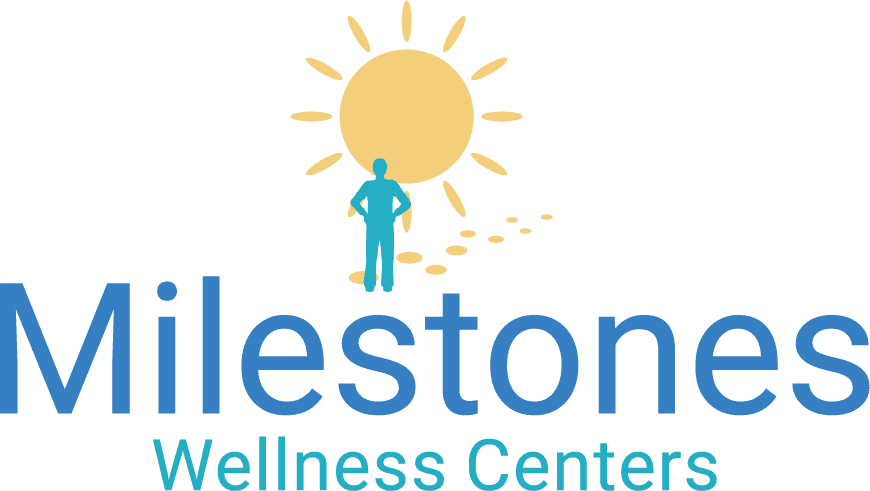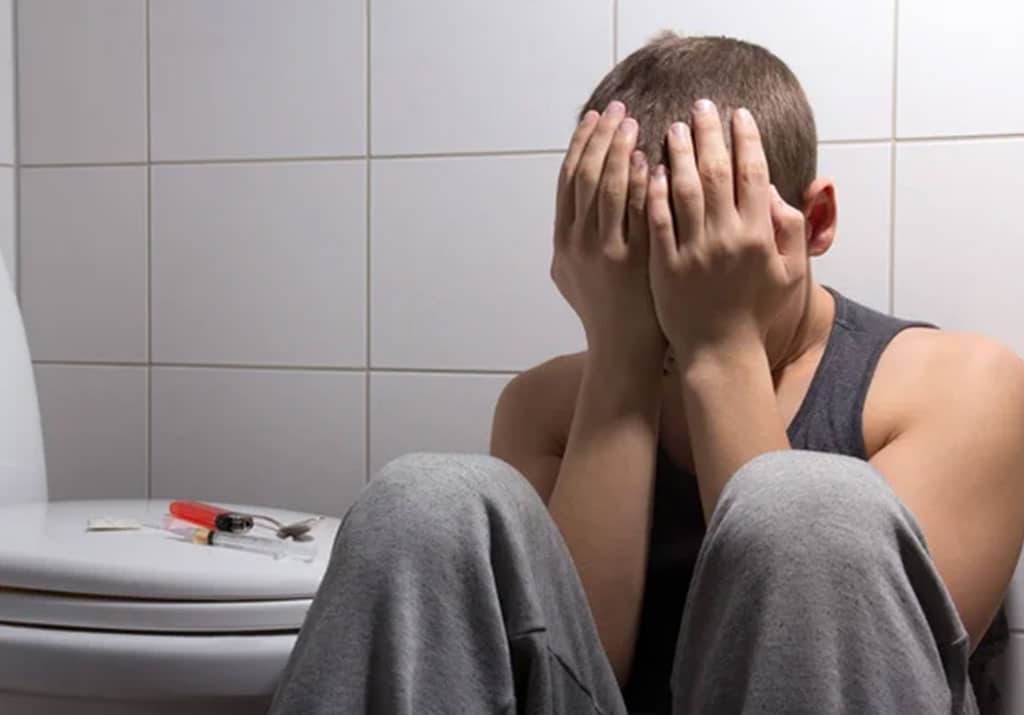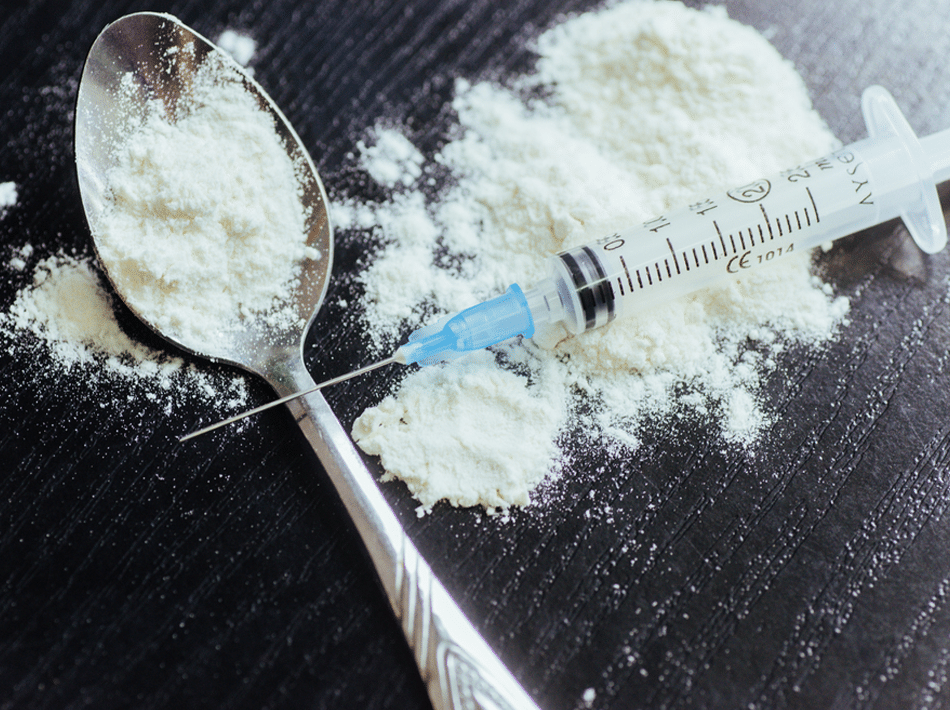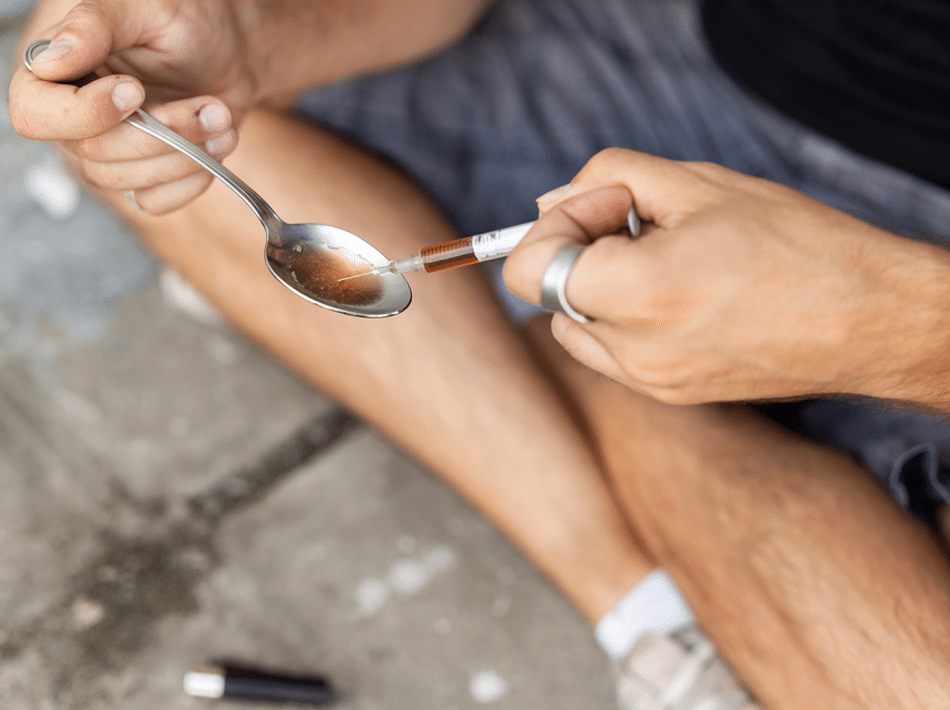Heroin is a semi-synthetic opioid that has been chemically processed from the opiate morphine. Opioids are synthetic versions of the drug and opiates are natural versions. However, both have the same addictive qualities and produce similar effects on the brain and body.
Understanding Heroin Addiction
Heroin is only semi-synthetic as the foundation of the drug comes from the poppy plant. In more current years, it is ever increasingly common that heroin purchased likely has been mixed (more commonly referred to as being cut) with other substances. Most commonly, Fentanyl, and at times the even more dangerous Xylazine is what the heroin is “cut” with to increase the potency of the drug. This also increases the dangers of overdose.
When heroin is taken it rapidly binds to the opioid receptors of cells. Heroin also has effects on cells in the body and brain, such as those that are in control of the feelings for pain and pleasure. The danger of heroin is that the cells it binds to also control functions such as your heart rate, breathing, and sleeping.
Therefore, heroin can easily cause someone’s heart to stop or cause them to stop breathing, and occasionally both at the same time. These are common overdose symptoms of heroin. Regarding breathing, when the person’s breathing is affected, it can cause hypoxia. This is a decrease in oxygen that reaches the brain. Hypoxia can have either long- or short-term mental effects including permanent brain damage or a coma.
Other fillers commonly found in heroin can also cause side effects. Some common additives are starch, sugar, or powdered milk, which will clog blood vessels. This will lead to damage to the lungs, liver, kidneys, and/or brain. Those individuals sharing needles have a risk of contracting Hepatitis and HIV. The additives of Fentanyl and Xylazine have greatly increased the potency of heroin and led to alarming increases in fatal overdoses. Fentanyl is a greatly more potent opioid as Xylazine is a powerful veterinary sedative, which unlike that of opioids and opiates, is not receptive to Narcan or Naloxone.
Heroin is highly addictive, as well as all other opioids and opiates are equally addictive. Individuals who regularly use heroin develop a tolerance to the drug. This requires them to need higher doses and at more frequent rates to get the desired effects. Some even report that there is a period in which the previously desired effects are just not attainable.
With such an increasing tolerance comes the body’s cessation of producing the natural chemicals and neurotransmitters, which cause the individual many problems in the drug’s absence, such as pain regulation. Along with the lack of naturally occurring endorphins, the body will go through varying levels of withdrawal depending on the individual’s metabolism and the level of addiction. For many, it is the withdrawal symptoms that continue the addiction just to not suffer the often severe and intense withdrawal symptoms.
The Journey of Heroin Addiction Recovery
The first step to recovery is deciding that it is time to seek treatment. This can be a hard decision to come to but is a huge and very important first step. There are various forms of treatment and not all work for each person. Many times, it may take a few attempts at treatment to hit a stable level of recovery.
With the start of treatment, some form of withdrawal is almost guaranteed but does not have to be a severe level of withdrawal. At the start of treatment, you need to detoxify the body. Some avenues require full detoxification and focus on behavioral interventions and true abstinence from any medications and substances.
Other avenues of treatment require a mild detoxification for enough of the opioids and opiates to be out of the system. This is so that the medications can work without causing any added discomfort. These medications can assist with withdrawal and physical cravings, such as that of Suboxone or Sublocade.
Some of the common medical interventions with heroin, or any opioid and opiate addiction, are Methadone, Suboxone (Buprenorphine), and Naltrexone. The difference is that Methadone is a full agonist medication that activates opioid receptors in the brain. Methadone has been reported by many patients to be a harder medication to come off than Buprenorphine, more commonly referred to as Suboxone.
Buprenorphine is a partial agonist medication that only partially activates opioid receptors to ease cravings and withdrawal. Therefore, it is easier to titrate off than compared to other similar medications. Also, Suboxone includes the drug Naloxone which is an opioid antagonist that will reverse the effects of opioids and is a safeguard in the event of a relapse while appropriately using Suboxone.
Lastly is Naltrexone, which is an opioid receptor antagonist. This prevents opioids or opiates from attaching to their receptor sites, therefore blocking their effects. It also provides no support for cravings or withdrawal symptoms. There are variations of all the listed medications and names may vary some by manufacturer, but these are the three main areas of medical interventions for opioid and opiate addiction.
There are many behavioral interventions for heroin addiction as well. It is usually best to have a combination of medical intervention with behavioral interventions. The word intervention often makes people think of a room full of people talking to someone with addiction issues.
As this is a type of behavioral intervention, it is not the only one. Those types of interventions can be beneficial to assist a person in seeing their addiction and how it has an effect not just on themselves but on the lives of those around them. The behavioral interventions to help with addiction are often in the form of some type of therapy, whether individual therapy, group therapy, or a combination of the two.
For behavioral therapies, many can be used to assist a person. For every person, different therapeutic techniques may work better than others. One of the most common types of behavioral therapies used is that of Cognitive Behavioral Therapy. This therapy’s main purpose is to assist a person in making positive life changes by assisting them with changing the way that they think about their life experiences and relationships.
Cognitive Behavioral Therapy can also assist a person in identifying their negative and unhealthy ways of thinking, which often goes hand in hand with the rationalizations for continuing substance usage. Other types of therapies can also be used as interventions to assist with opioid and opiate dependency, which are, but are not limited to, Rational Emotive Behavioral Therapy and Dialectical Behavioral Therapy.
In recovery, it is very important to have well-established support networks. These will look different for every person but have some similarities. One of the most common support networks is that of friends and/or family members. These support networks must be available to you in times of need. Make sure it also does not include anyone who is a trigger for heroin (or any opioid and opiate) usage. That would include not having anyone that you associate prior usage with or individuals that cause great deals of stress in those support networks.
Another common type of support network is that of Narcotics Anonymous. The 12-step program has been greatly helpful in many individuals’ recovery. Often an advantage here with support groups is that you will meet others who have been in similar situations to yourself. Unlike that of other supports (and not saying other supports are not a great resource), these individuals understand what it is like to go through active addiction as well as recovery.
The way that Narcotics Anonymous, more commonly referred to by its acronym N.A., is that it is a group of support groups that are anonymous as in the name. There are thousands of N.A. groups across the country and can usually find one to attend no matter where you live. Often, an individual will pick a “home” group which is where they will attend most often. The individual will also pick a sponsor, which is a person they will be able to easily confide in, in times of need. That sponsor will also help the person work through the steps of N.A. in their recovery guide.
Even without believing in all the steps of the program, the social support provided within these organizations is an amazing and useful recovery resource for a person to have.
Overcoming Potential Recovery Challenges
During your substance abuse treatment, you should learn many strategies to assist you in the challenges that can come up during your recovery. Not everyone will experience the same challenges or the areas of challenges, they will be different for every person. However, the general principles to learn for the strategies will apply to anyone who is in substance abuse recovery. Before discussing some of the many types of relapse prevention, it is important to understand the types of relapses.
The first type of relapse is emotional relapse. In this type of relapse, the individual does not think about using but is in a state where they are remembering their last relapse or use. During this emotional relapse, the person does not want to repeat the last relapse or go back to using. However, these thoughts have substance usage on the mind.
It is these thoughts that are laying the groundwork for a relapse, often because the person may be in denial of the potential risk of relapse. Denial of relapse can prevent a person from the effective use of relapse prevention techniques. Some of the signs that you are in an emotional relapse are poor self-care such as insufficient sleeping, unhealthy eating habits, cessation of exercise, focusing on the problems of others, and discontinuation of attending meetings/therapy or not sharing in those meetings/therapy.
Mental relapse is a state where a person is struggling between the internal desire to start using substances again and the conflicting desire to remain in recovery or abstinence. Individuals in this stage are at the highest risk of relapse during special times in their lives such as social events, holidays, vacations, or other times where justification for substance use will be easiest. It is highly important to know that occasional thoughts about substance usage and cravings are a common part of recovery.
Some of the signs that a person is in a mental relapse are craving a substance, thinking about the positive aspects of past use, minimizing the negative consequences of past usage, bargaining, and lying about thoughts/behaviors. Other signs include seeking out ways to relapse, planning on how to use while believing they can maintain control of the usage, and thinking about the people, places, and things they have associated with their past usage.
The third stage of relapse is physical relapse. This occurs when the individual has resumed usage of the substance, no matter the amount or duration. Some view a single usage as a “lapse” which can be correct in some areas. However, it is often any single “lapse” that will lead to the obsession of further usage causing the relapse. Most often physical relapse occurs at a time when the individual has the belief that their substance usage will not be detected by others. It is at this point that a person has fully relapsed.
One of the most important prevention strategies is dealing with cravings and triggers. This is best done with the support of a therapist or work with a sponsor from support groups. One of the strongest triggers is those associated with withdrawal symptoms.
Withdrawal symptoms are one area of internal triggers, which also can include stress, happiness, and thoughts. External triggers can be when you are exposed to the substance(s) or being around the people, places, and things that remind you of using the substance. It is the triggers, both internal and external, that cause the cravings. This in turn can lead to relapse.
Co-occurring disorders are common with substance abuse. What this means is that there is some other mental disorder that is happening at the same time as the Substance Use Disorder. Some of these other mental health disorders are depression, anxiety, bipolar disorder, attention deficit hyperactivity disorder (ADHD), post-traumatic stress disorder (PTSD) to more complex disorders such as schizophrenia and personality disorders.
At times, other mental disorders can contribute to substance use or abuse and to the development of Substance Use Disorders. Alternately, substance abuse or Substance Use Disorders can also contribute to the development of mental disorders in an individual. Therefore, it is important to work with a mental health professional to see if other co-occurring mental disorders are present and to work on assisting those while working on recovery.
A great relapse prevention is to live a healthy lifestyle. The reason here is that substance use, and a healthy lifestyle do not go hand in hand. A healthy lifestyle will take some time to get into effect. Usually, it takes a person about three weeks to establish new habits in their routine. This lifestyle should include better and healthy eating habits, getting adequate amounts of sleep, and exercise. Also, being healthier will assist you in feeling better both physically and mentally. This will assist you in the desire to remain in active recovery.
Success in Recovery
There is no set standard for measuring success in substance abuse recovery, regardless of the substance(s) of choice. Success is highly individualized for everyone and may have different meanings. Either way, starting treatment is a success you should be proud of as well as any sustained period of recovery.
Some people enter substance use treatment once and never return to active addiction. On the other hand, others may take years and many attempts at treatment and recovery. It is important to acknowledge any successes in recovery as those are positives and focusing on the positives will assist you more in continued treatment and recovery. As there is no set standard for measuring success in recovery there is some useful data out there.
The use of medication to assist with Opioid Use Disorder has been proven to be effective for treatment outcomes. Per the National Institute on Drug Abuse, individuals in opioid and opiate treatment who received either Methadone or Buprenorphine (Suboxone) are 1.82 times more likely to stay in treatment than those without the use of medication. This is a statistically significant increase in recovery, which can be viewed as a success.
Resources for Help and Support
Often when people think of help and support, many first would think of some hotlines or helplines that are available. As there are those for many other psychological or mental disorders such as suicide prevention hotlines, there is not the same for substance abuse.
If you search the internet, you will find helplines listed. Some are such as the US Government agency SAMHSA (Substance Abuse and Mental Health Administration). It is always a good idea to reach out in a time of need, but almost all of these helplines are just referral sources for treatment facilities.
A basic Google search shows that most of the “helplines” that appear are for treatment facilities, which will just refer you to their own services. If you need immediate help, it is best to call an in-patient treatment facility that operates 24 hours a day or the Emergency Room at your local hospital.
One of the best lines of help you can establish is by setting up a strong support network, such as getting a sponsor with Narcotics Anonymous. Usually, a sponsor will make themselves available at any time for you, as they know what it is like to be early in recovery or hit points where a person struggles and needs help at unexpected times.
Other supports can be family and friends who, most importantly, are sober and know that you are working on recovery. Another great support is a therapist. However, they often cannot be an immediate line of help outside of their office hours.
Rehabilitation Centers and Treatment Programs, such as Milestones Wellness Centers, are great resources for help. These are specialized treatment programs there to assist you in your recovery and provide guidance along the way. There are multiple levels of treatment and finding the correct treatment program all depends on your need.
The most intense treatment is that of in-patient treatment. In-patient treatment programs are an amazing place to start. While at these facilities, they should be providing you with individual and group therapies daily. As daily therapy may seem intense, it is a way to work through a lot of therapy in a short time.
The next level of treatment is an Intensive Outpatient Program. These are similar to In-Patient programs in the level of services you will receive. However, you do not spend the night at these locations. Often people may desire to not stay at a treatment facility. But, if your home environment is not safe or there are drugs at your residence, in-patient would be recommended.
Intensive Outpatient Programs often require an individual to attend every day or most days of the week and for a good portion of that day. Many are around eight or more hours a day. During this time, you will attend individual and group therapy sessions, similar to that of the in-patient treatment programs.
The third level of treatment options is Outpatient Treatment. This treatment level often varies greatly depending on the facility. Outpatient treatment can often be more tailored to meet your needs and areas of concern. Some will offer individual and group therapies, and some may have those as program requirements to continue in treatment. Some offer Medications for Opioid Use Disorder or MOUD, which was previously called Medication Assisted Treatment (MAT).
This is the use of medication to assist in the treatment of Opioid Use Disorder, such as that here at Milestones Wellness Centers. The medications used in Medications for Opioid Use Disorder are Buprenorphine (Suboxone), Methadone, and Naltrexone. The purpose of these medications is to assist with withdrawal and cravings while you work on other areas of improving your life and therapy in recovery.
If you or a loved one is battling heroin addiction, don’t wait to seek help. Contact our recovery specialists today to explore your treatment options and start on the path to a healthier, drug-free life. Your journey to recovery begins with a single step—reach out now.





